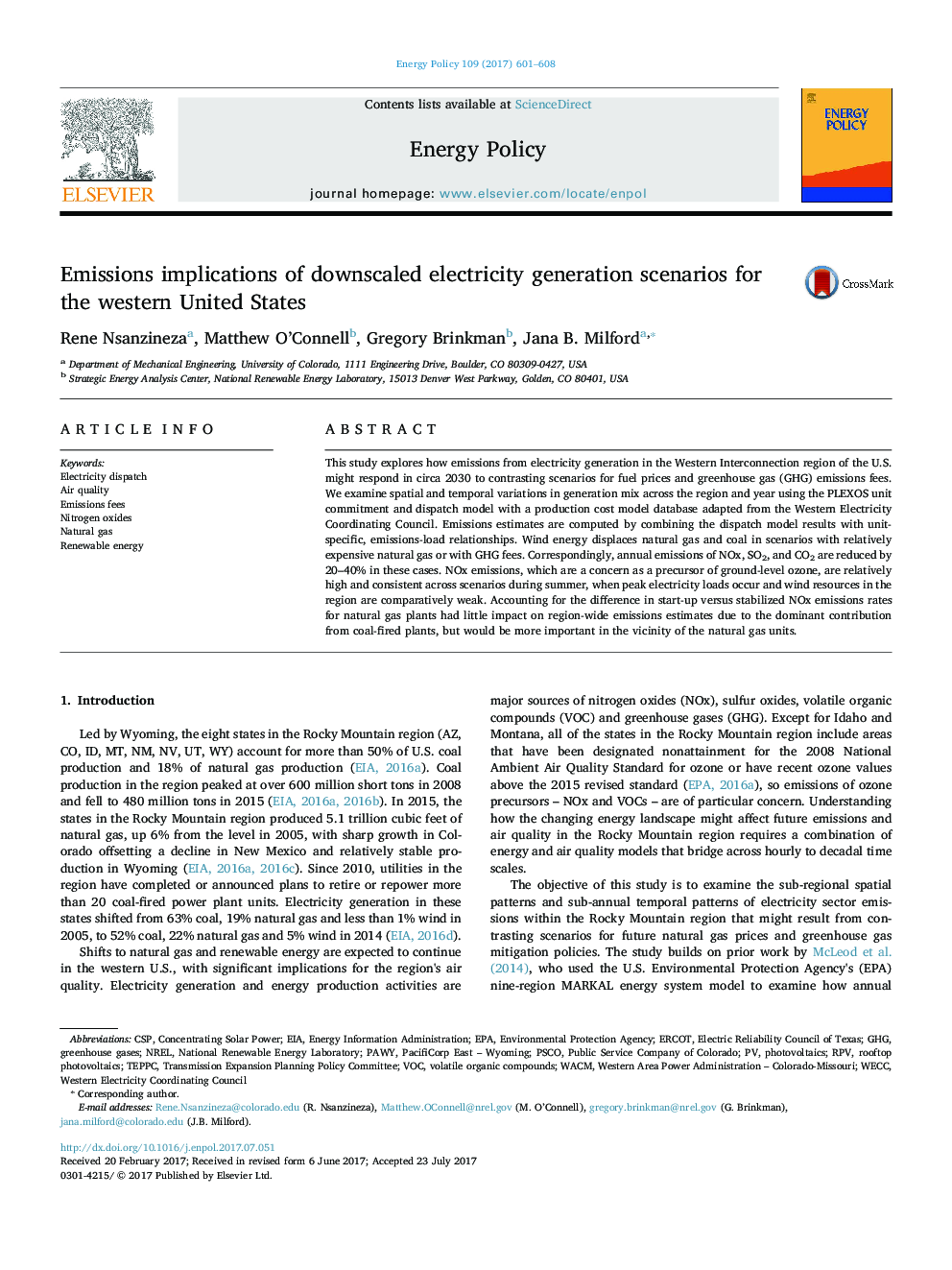| Article ID | Journal | Published Year | Pages | File Type |
|---|---|---|---|---|
| 5105745 | Energy Policy | 2017 | 8 Pages |
Abstract
This study explores how emissions from electricity generation in the Western Interconnection region of the U.S. might respond in circa 2030 to contrasting scenarios for fuel prices and greenhouse gas (GHG) emissions fees. We examine spatial and temporal variations in generation mix across the region and year using the PLEXOS unit commitment and dispatch model with a production cost model database adapted from the Western Electricity Coordinating Council. Emissions estimates are computed by combining the dispatch model results with unit-specific, emissions-load relationships. Wind energy displaces natural gas and coal in scenarios with relatively expensive natural gas or with GHG fees. Correspondingly, annual emissions of NOx, SO2, and CO2 are reduced by 20-40% in these cases. NOx emissions, which are a concern as a precursor of ground-level ozone, are relatively high and consistent across scenarios during summer, when peak electricity loads occur and wind resources in the region are comparatively weak. Accounting for the difference in start-up versus stabilized NOx emissions rates for natural gas plants had little impact on region-wide emissions estimates due to the dominant contribution from coal-fired plants, but would be more important in the vicinity of the natural gas units.
Keywords
WECCGHGNRELCSPEPAVOCElectric Reliability Council of TexasRPVERCOTNational Renewable Energy LaboratoryEnvironmental Protection AgencyEnergy information administrationRenewable energyNitrogen oxidesEIAVolatile organic compoundsConcentrating solar powerPhotovoltaicsAir qualityNatural gasGreenhouse gases
Related Topics
Physical Sciences and Engineering
Energy
Energy Engineering and Power Technology
Authors
Rene Nsanzineza, Matthew O'Connell, Gregory Brinkman, Jana B. Milford,
